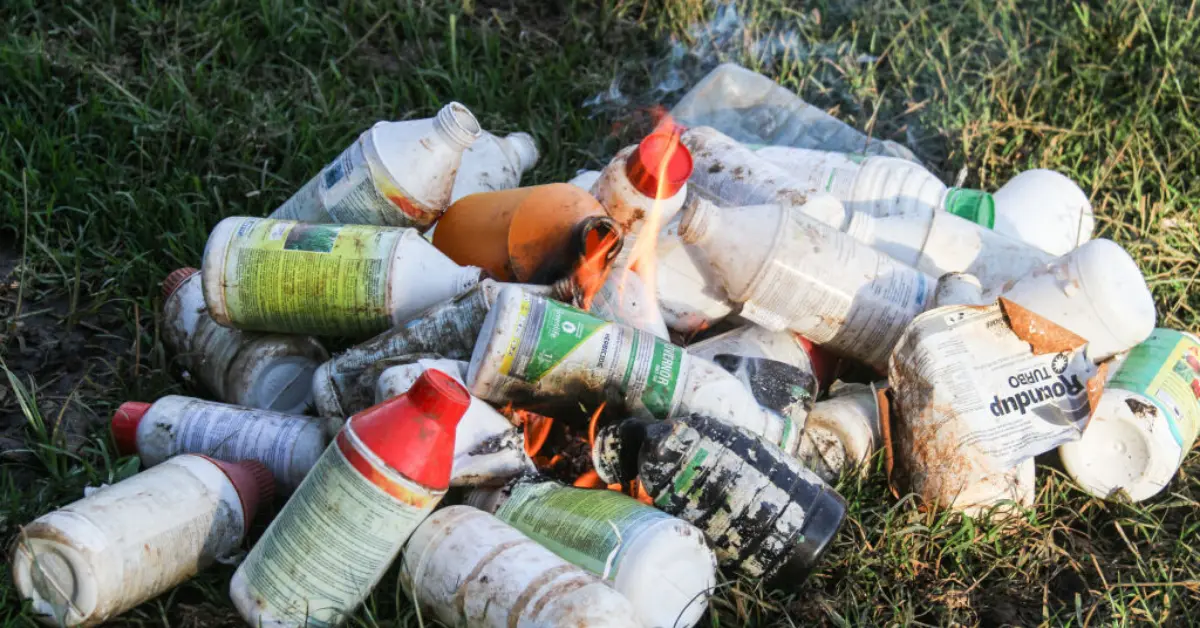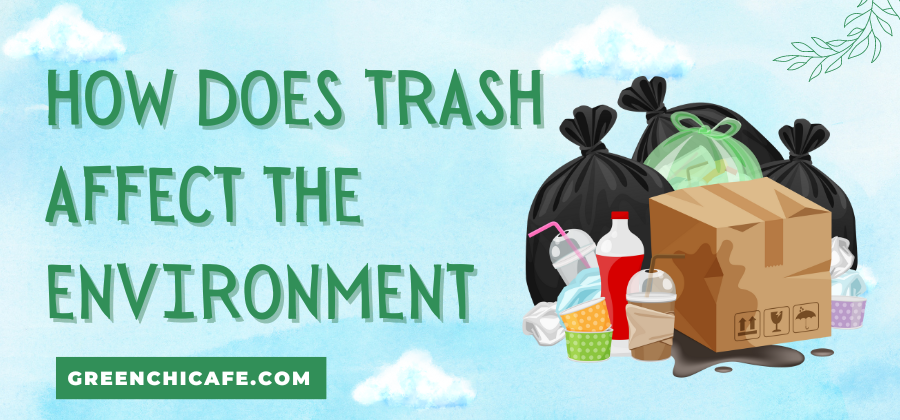Trash affects every part of the environment, from the air we breathe to the water we drink.
The way we handle our garbage has direct effects on wildlife, plants, soil, and even human health.
This article explores the consequences of trash on our ecosystems and why effective waste disposal is crucial.
How Does Trash Affect the Environment?

Trash has widespread negative impacts on all aspects of the natural environment.
Litter and landfill waste pollute air, soil, and water systems.
Trash harms plants, animals, and humans through contamination, habitat degradation, and the spread of disease.
Effective waste management is imperative to protect ecosystems and public health.
Key Points
- Trash releases air pollutants including greenhouse gases, particulates, and toxic chemicals
- Wildlife can ingest debris or become entangled, often resulting in injury or death
- Landfill waste can leach heavy metals, chemicals, and pathogens into groundwater
- Litter provides breeding grounds for mosquitoes, rats, and parasites that spread diseases
How Does Trash Affect the Environment? How Does It Affect Ecosystems and Wildlife?
Trash on the ground and floating in waterways wreaks havoc on the environment.
Plastic bags, bottles, packaging, and other waste can choke, suffocate, or disable wildlife like dolphins, seabirds, and turtles.
Animals will eat or become tangled in waste, which is often fatal.
Additionally, trash degrades natural habitats.
It can introduce chemicals, oils, and toxins into soil and water systems as it breaks down.
These contaminants poison plants and animals or make areas uninhabitable.
Surface waste also spreads disease by providing breeding grounds for mosquitoes, rats, and parasites.
Trash blocking storm drains and streams causes flooding and other property damage.
Litter is unsightly but its effects go much deeper than aesthetics.
What Issues Does Marine Debris Cause?
Trash originating on land makes its way into oceans through stormwater runoff, sewage overflows, and wind dispersal.
About 80% of marine debris comes from land-based sources.
Once in waterways, trash can travel long distances on currents.
The largest accumulation of ocean plastic dubbed the Great Pacific Garbage Patch, spans waters from the West Coast of North America to Japan.
Marine life around the world is threatened by discarded fishing gear, plastic bags, and microplastics floating in the ocean.
Sea turtles and dolphins often mistake floating plastic for food.
Consuming synthetic materials leads to intestinal blockages, starvation, and death.
Entanglement in derelict fishing nets causes drowning, laceration, and infection.
According to the Ocean Conservancy, over 600 marine species have encountered marine debris through ingestion and entanglement.
How Do Landfills Harm the Environment?
Landfills are the third largest source of methane in the United States.
Organic materials like paper, yard waste, and food decompose in landfills, generating methane as a byproduct.
Methane is a powerful greenhouse gas 86 times more potent than carbon dioxide.
Landfills are the single biggest human-related source of methane emissions in the United States.
In addition to climate impacts, landfills can contaminate soil and groundwater with toxic chemicals and heavy metals.
Landfill liners and covers sometimes leak or tear, allowing pollution to spread.
Neighboring communities suffer increased rates of certain cancers, birth defects, and respiratory diseases.
Modern waste management strives to reduce landfilled trash through recycling programs and waste-to-energy conversion.
However, the U.S. EPA estimates over 50% of waste is still sent to landfills.
Reducing consumption and reusing materials are the most effective ways to lower waste volumes.
How Does Litter Affect Plants and Soil Health?
Litter impacts plants both directly and indirectly.
Glass, metal, and plastic degrade soil health by altering its pH, nitrogen levels, respiration, and microbial activity.
Microplastics stunt plant growth and development.
Trash also introduces harmful chemicals into the ground as it breaks down.
These contaminants are absorbed by plants through their roots.
Food crops irrigated with contaminated water pass toxic substances onto humans.
Indirect damage from litter includes light deprivation, root exposure, and changes to soil hydrology.
Weeds often colonize areas with heavy litter coverage, competing with native plants.
Invasive plants outgrow other species, reducing biodiversity.
What Is the Link Between Trash and Flooding?
Trash clogs drainage infrastructure, causing localized flooding after rains.
Litter covering storm drains, streams, and catch basins prevents water from draining properly.
Excess water then spills over into properties and streets.
In cities, excess litter is swept into sewers, sticking together to form blockages.
Water backs up behind these obstructions, sometimes flowing up through manholes onto roads.
Sewer overflows are a major source of urban flooding.
Plastic bags are a top flood-related litter problem.
They clog storm drains and waterways, accumulating in mass quantities.
New York City pays about $10 million annually to remove bags from its wastewater equipment.
How Does Surface Trash Spread Disease?
Improperly discarded trash facilitates the spread of numerous diseases by harboring pathogens, bacteria, and viruses.
Mosquitoes carrying West Nile virus and Zika breed in standing surface water collecting in litter.
Rat populations boom around areas with accessible food waste.
Rodents spread over 35 diseases through their parasites and urine.
Discarded drug needles and broken glass raise the risk of tetanus when they cause open wounds.
Polluted waterways expose surrounding communities to hepatitis A, typhoid fever, and cholera outbreaks through contaminated drinking water.
Pathogens from surface waste can infect humans through direct contact, animal carriers like mosquitoes, or environmental transmission through water and soil.
Proper waste disposal limits these infection routes.
Does Trash Release Air Pollution?
Yes, the decomposition of organic waste releases problematic airborne contaminants.
Landfills generate methane as waste breaks down in the absence of oxygen.
Open-burning waste, a disposal method in developing countries, creates harmful particulate matter, carbon monoxide, and cancer-causing chemicals.
Chemicals and pesticides from the trash can evaporate into the air, spreading toxic pollution.
Fine particulates from litter and soil dust cause respiratory issues.
Other compounds like hydrogen sulfide contribute to acid rain.
Regular trash collection, covered landfills, alternative waste disposal methods, and surface cleaning mitigate pollution issues.
However, reducing consumption and reusing materials are the most impactful solutions.
Why Is Curbing Trash Important for Human Health?
Humans suffer direct and indirect health consequences from contamination and pollution caused by improper waste management.
Toxins from trash in drinking water, crops, and livestock can cause cancer, organ damage, immune dysfunction, and birth defects.
Respiratory diseases like asthma arise from breathing airborne landfill emissions and particulates from open waste burning.
Gastrointestinal illnesses are contracted through pathogens in polluted water and areas with accumulated refuse.
Mosquito-borne diseases from standing water kill thsignificantly annually.
Limiting trash production, practicing proper disposal, and implementing innovative waste solutions will greatly benefit public health while reducing pressure on our environment.
Why Is Recycling Important to the Environment?

Recycling is a critical component of waste management that reduces environmental contamination.
It decreases the volume of material sent to landfills and incinerators by reprocessing usable discarded items.
Recycling also lowers greenhouse gas emissions associated with manufacturing products from raw materials.
Using recycled materials consumes less energy and preserves natural resources like timber, minerals, and water.
Additionally, recycling helps curb pollution by mitigating the need to extract and process new materials.
Implementing effective recycling programs is an important step toward developing a sustainable economy.
What Are the 5 Benefits of Recycling?
There are numerous advantages to properly recycling materials, including:
- Reduces waste sent to landfills and incinerators
- Prevents pollution from greenhouse gases and manufacturing
- Conserves natural resources like trees, ores, and water
- Saves energy required to process raw materials
- Provides materials to produce new goods sustainability
Maximizing recycling efforts delivers economic benefits and significantly mitigates the environmental impacts of waste and manufacturing.
In Summary
Litter and landfill waste degrade natural habitats, spread disease, release air pollutants, and contaminate soil and water.
Trash adversely affects plants, humans, and animals worldwide.
Implementing responsible consumption, recycling, and disposal practices is key to mitigating these broad impacts of pollution.
Effective waste management protects ecosystems, wildlife, and public health.
FAQ
What are the effects of improper waste disposal?
Improperly discarded trash contaminates ecosystems in many ways. Litter and landfill waste release air pollutants including methane, a potent greenhouse gas. Debris harms wildlife through ingestion and entanglement. Toxins from waste can leach into soil and water tables. Trash also spreads disease by fostering mosquito breeding and rat populations.
How does plastic pollution affect marine environments?
Plastics make up the majority of marine litter. Floating plastic debris entangles and kills hundreds of thousands of marine animals each year. Plastic additives like bisphenol A (BPA) disrupt hormonal function in fish and mammals. Microplastics absorb toxic chemicals that accumulate up the food chain. Plastic waste also introduces invasive species to new ecosystems on floating debris.
What is an environmentally-friendly alternative to landfills?
Modern landfills capture methane emissions, but waste-to-energy conversion provides a greener alternative to landfilling trash. Waste-to-energy, also called energy-from-waste, involves incinerating garbage to generate electricity. This decreases waste volume by up to 90% and provides renewable power. Ash residue and air pollutants require proper disposal, but waste-to-energy reduces landfill dumping and methane emissions.
How does the open burning of trash affect human health?
Uncontrolled outdoor burning of waste generates fine particulates, toxic chemicals, and carcinogens. These air pollutants increase rates of respiratory illness, cardiovascular disease, neurological impairment, and certain cancers. Dioxins and furans released by uncontrolled burning can disrupt hormones and reproductive systems. Heavy metals from burned waste contaminate soil, crops, and livestock consumed by nearby populations.
How can individuals help reduce the problem of trash pollution?
Everyday actions can mitigate trash issues when practiced collectively. Reducing consumption, reusing materials, and recycling properly decreases waste disposal needs. Carrying reusable shopping bags, avoiding single-use plastics, and composting food scraps also help. Participating in community clean-ups removes litter from parks, beaches, rivers, and public areas. Following proper disposal guidelines for household waste prevents contamination.
At GreenChiCafe, we are passionate about protecting the environment and living sustainably. Trash is a widespread yet preventable form of pollution. Our daily choices determine how much waste we generate and whether it is disposed of responsibly. We encourage you to help curb this issue by reducing consumption, reusing materials, and disposing of trash properly. When we work together, small changes add up to create a cleaner, healthier planet. Please explore the GreenChiCafe website to learn more about preserving our natural world.

Annie is a passionate environmental writer and activist. She has been writing about sustainability, conservation, and green living for over 15+ years. Annie is dedicated to raising awareness about environmental issues and providing practical tips for living an eco-friendly lifestyle. When she’s not writing, you can find her volunteering with local environmental organizations, teaching workshops on zero waste living, or exploring nature. Feel free to get in touch with Annie: annie@greenchicafe.com
